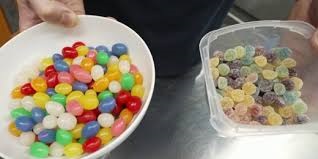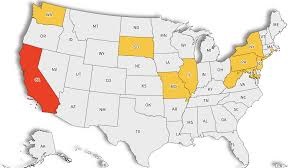Governments worldwide Food Dye Ban are increasingly banning synthetic food dyes due to mounting evidence linking them to health risks. Studies associate artificial colors like Red 40 and Yellow 5 with hyperactivity in children, allergic reactions, and potential carcinogenic effects. The European Union already mandates warning labels on dyed foods, while the U.S. faces growing pressure to follow suit. The push for a **food dye ban** stems from consumer demand for transparency and safer ingredients. Public health advocates argue that synthetic additives offer no nutritional value, making their risks unjustifiable. This shift reflects a broader trend toward prioritizing long-term wellness over artificial aesthetics.

Health Risks of Artificial Food Coloring: Hyperactivity, Allergies, and Long-Term Effects**
Artificial food dyes are linked to behavioral issues, particularly in children. Research shows synthetic colors may exacerbate ADHD symptoms, prompting organizations like the Center for Science in the Public Interest to call for stricter regulations. Allergic reactions, such as hives and asthma, are also common. Long-term, some dyes contain benzidine, a carcinogen found in animal studies. Despite FDA approval, critics argue current safety standards are outdated. A **food dye ban** could mitigate these risks, especially for vulnerable populations. Parents and health professionals increasingly advocate for dye-free diets, emphasizing the need for precautionary measures in food safety policies.
California’s Landmark Food Dye Ban: What the New Law Means for Consumers**
California recently passed a groundbreaking **food dye ban**, prohibiting Red 40, Yellow 5, and other synthetic colors in school meals and children’s products. Set to take effect in 2025, the law aims to reduce kids’ exposure to harmful additives linked to hyperactivity. Brands must reformulate candies, snacks, and beverages sold in the state or face fines. While praised by health advocates, the policy has sparked industry pushback over cost and feasibility. For consumers, this means clearer labels and healthier options. California’s move could inspire similar legislation nationwide, accelerating the shift toward cleaner ingredient lists.
Europe vs. the US: How Food Dye Regulations Differ Globally**
Europe’s approach to food dyes contrasts sharply with U.S. policies. The EU requires warning labels like “may impair activity and attention in children” on dyed products and bans several dyes outright. In contrast, the FDA permits nine synthetic colors, citing insufficient evidence of harm. This regulatory gap highlights cultural differences in risk tolerance and lobbying influence. For instance, the U.S. food industry spends millions opposing a **food dye ban**, while European policymakers prioritize the precautionary principle. These disparities leave American consumers at greater risk, fueling demand for harmonized global standards and transparency in food labeling.
Natural Alternatives to Synthetic Dyes: Beetroot, Turmeric, and Spirulina Solutions**
Replacing synthetic dyes with natural alternatives is gaining traction. Ingredients like beetroot (red/pink), turmeric (yellow), and spirulina (blue) offer vibrant hues without health risks. Companies such as Nestlé and Mars already use spirulina-derived coloring in candies. While natural dyes may cost more and have shorter shelf lives, they align with clean-label trends. The **food dye ban** movement has accelerated innovation, with startups creating plant-based solutions for baked goods, beverages, and snacks. Consumers increasingly seek these alternatives, proving that vibrant foods need not rely on controversial chemicals.
Impact on the Food Industry: Reformulating Products Post-Ban**
A **food dye ban** forces manufacturers to overhaul recipes, testing natural substitutes for stability and appeal. Reformulation costs are steep, but brands like Kraft and General Mills have successfully transitioned to plant-based dyes in products like macaroni and cheese. Smaller companies may struggle with sourcing and pricing, risking market competitiveness. However, early adopters gain consumer trust and tap into the $50 billion clean-label market. The shift also spurs collaboration between food scientists and farmers to scale natural dye production. While challenging, this transformation aligns with evolving consumer preferences for health-conscious, sustainable products.
Parental Concerns: How Food Dyes Affect Children’s Behavior and Health**
Parents are at the forefront of the **food dye ban** movement, citing links between artificial colors and hyperactivity, tantrums, and poor focus. Social media groups share dye-free diets and “clean” product lists, while pediatricians report improved behavior in children avoiding synthetic dyes. Schools in California and New York are removing dyed snacks from cafeterias, responding to parental demands. Advocacy groups urge the FDA to update safety reviews, arguing current thresholds ignore cumulative effects. With 1 in 10 U.S. children diagnosed with ADHD, eliminating dietary triggers becomes a critical public health priority.
FDA Stance on Food Dyes: Current Guidelines and Future Changes**
The FDA maintains that approved synthetic dyes are safe but acknowledges gaps in neurobehavioral research. Current guidelines, last updated in the 1980s, allow dyes deemed “GRAS” (Generally Recognized as Safe). However, a 2021 petition by advocacy groups demands a **food dye ban** or stricter labeling. The agency is reviewing new data, with potential updates to daily intake limits. Critics argue the FDA’s industry ties delay action, contrasting with Europe’s proactive stance. Future regulations may hinge on bipartisan support, as seen in California, signaling a turning point for food safety standards in the U.S.
How to Identify Banned Food Dyes: Reading Labels and Avoiding Risks**
Navigating food labels is key to avoiding synthetic dyes. In the U.S., check for terms like “Red 40” or “Blue 1” in ingredients lists. Post-**food dye ban**, products in regulated states will highlight natural alternatives like “colored with vegetable juice.” Apps like Yuka and EWG’s Healthy Living scan barcodes for risky additives. Opt for certified organic foods, which prohibit synthetic dyes. Parents should scrutinize snacks, cereals, and beverages, as these commonly contain artificial colors. Education empowers consumers to make safer choices, driving demand for transparency and accountability in food manufacturing.

The Future of Food Coloring: Trends Toward Clean Labels and Transparency**
The **food dye ban** movement is reshaping the $3 billion food coloring industry. Demand for clean labels—products with recognizable, natural ingredients—is surging, with 60% of consumers willing to pay more for dye-free options. Startups are innovating with butterfly pea flower and black carrot extracts, while tech firms explore algae-based solutions. Regulatory pressures and shifting preferences will likely phase out synthetic dyes globally within a decade. Transparency apps and blockchain tracking further empower buyers, ensuring brands uphold safety promises. The future of food coloring lies in sustainability, health, and ethical innovation.
Conclusion**
The **food dye ban** reflects a growing consensus that synthetic additives pose unnecessary risks. From California’s legislation to natural alternatives like turmeric and beetroot, the movement prioritizes health without sacrificing vibrancy. While challenges remain for manufacturers and regulators, consumer demand for transparency is irreversible. As science evolves and policies adapt, the food industry must balance aesthetics with accountability, ensuring safer choices for future generations.
FAQs
Which food dyes are commonly banned?**
Red 40, Yellow 5, and Blue 1 are frequently targeted due to links to hyperactivity and allergies.
Are natural food dyes safe?**
Yes, plant-based dyes like beetroot and spirulina are generally safe and free from synthetic chemicals.
How do food dyes affect ADHD?**
Studies suggest artificial colors may worsen hyperactivity and impulse control in sensitive children.
Is the U.S. banning all food dyes?**
Currently, only California has passed restrictions, but national bans are under debate.
What foods contain the most synthetic dyes?**
Candies, sodas, cereals, and processed snacks often use artificial colors.
Can food dyes cause cancer?**
Some dyes contain carcinogenic contaminants, though risks are debated. Long-term studies are limited.
How can I avoid synthetic dyes?**
Read labels, choose organic products, and use apps to identify additives.
Why does Europe regulate dyes more strictly?**
The EU follows the precautionary principle, prioritizing safety over industry interests.
Will natural dyes change food flavors?**
Most plant-based dyes are flavorless, though some (like turmeric) may impart mild tastes.
10. Are companies required to disclose dyes?**
Yes, but terms like “artificial color” may be used instead of specific names.